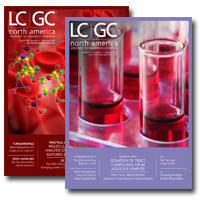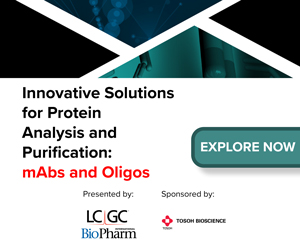The LCGC Blog
Optimizing gas chromatography separations typically involves making some informed choices around stationary-phase chemistry and column temperature programs.
Learn more
Featured Articles
Our annual review of new gas chromatography (GC) products introduced in the past 12 months.
Learn more
There are a few protocols to assess and quantitate N-glycans, but the most common approach is through an enzymatic release and labelling procedure, followed by separation and detection. This article demonstrates the method development considerations for sample preparation and chromatographic analysis of N-glycans of therapeutic mAbs.
Learn more
When explosives are encountered on the battlefield, the use of portable GC–MS is valuable for the detection and confirmatory identification of pre- and post-detonation threats. In addition, this technique provides information about the source of explosives based on the detection and identification of trace-level chemicals in the sample. The data presented here confirm this capability.
Learn more
|
|
|
Subscribe
Subscribers can enjoy each full issue of LCGC in print, or via LCGC apps.
subscription offers |
 |
|
|

|
|
|
|
How should you maintain the calibration and qualification of chromatographs during the COVID-19 pandemic? Here, we discuss the details of how to ensure data integrity of results when faced with travel limitations and requirements for
social distancing.
Learn more
advertisement
Hamilton HPLC Application Index - Online!
Three easy steps and you have access to almost 1400 compounds that have been separated on Hamilton polymer-based HPLC columns.
• Compounds are listed alphabetically
• Keyword search makes it even easier to get the chromatograms and separation conditions
• Get valuable literature references
![]() Check out Hamilton’s online HPLC Application Index today! Check out Hamilton’s online HPLC Application Index today!
Market Profile
Flash chromatography is a purification technique that is designed for rapid separation by using air pressure as opposed to slow and inefficient gravity-fed chromatography. It differs from the conventional column technique by using slightly smaller silica gel particles and pressurized gas at 50–200 psi.
Learn more
|
|
|
New WEBCASTS
Monday, Jun. 22, 2020 at 11 am EDT | 8 am PDT | 4 pm BST | 5 pm CEST
Register>>
Monday, Jul. 13, 2020 at 11 am EDT | 8 am PDT | 4 pm BST | 5 pm CEST
Register>>
|
|
|
|
|
|